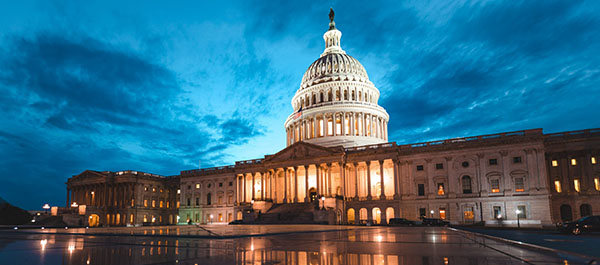Clean Water Current
EPA Appropriations Bills for 2019 Advance Through Committee, Senate Maintains Strong SRF Funding

(June 19, 2018) - The Senate Appropriations Committee released and quickly marked up, last week, its Fiscal Year 2019 (FY19) Interior, Environment, & Related Agencies Appropriations bill. The Senate bill received a bipartisan 31-0 Committee vote in favor. In a key victory for NACWA and the municipal clean water sector, the bill maintains the significant increases for clean water infrastructure funding enacted in FY18. This demonstrates the continued advocacy commitment of NACWA and its members to robust federal infrastructure investment.
Over in the House, the House Appropriations Committee has also passed its FY19 Interior, Environment, & Related Agencies Appropriations bill out of the full committee. The House bill passed on a strict party line vote, with only Republicans in support. Democrats oppose the bill because of its reduced funding levels and inclusion of partisan policy riders, which include a repeal of the “Waters of the United States” (WOTUS) rule. In order to maintain bipartisan support, partisan policy riders were not included in the Senate’s version of the bill.
Overall, the FY19 House bill would reduce EPA’s funding by just over one percent relative to FY18, providing the agency a total of $7.95 billion in FY19. While a cut, this funding level refutes President Trump’s proposal for drastic cuts of about 25 percent for the agency. In contrast, the FY19 Senate bill would provide level funding of $8.06 billion to EPA in FY19.
Specific to the clean water sector, the House bill provides a total of $2.6 billion for the State Revolving Funds (SRF) – a cut of $300 million relative to the current FY18 year. The House does provide $75 million for the Water Infrastructure Finance and Innovation Act (WIFIA), an increase of $12 million over FY18.
In comparison, the Senate bill provides a slight increase of $1 million to the SRFs for a total of $1.69 billion for the Clean Water SRF and $1.164 billion for the Drinking Water SRF. The Senate also increases funding the categorical grants to states and provides strong funding for other programs of interest. For WIFIA, however, the Senate maintains FY18 funding at $63 million.
NACWA will continue advocating for strong funding levels for clean water programs while the FY19 funding bills advance. Congress will be making more decisions this week regarding whether and how to advance individual appropriations bills before FY18 runs out on September 30.
Congress is currently looking to “package” several bills together, and the fate of the Interior & Environment bill may depend on whether it – as one of the most contentious funding bills – is packaged with other partisan bills, thus subjecting it to numerous partisan amendment votes, or whether it is packaged with non-partisan high-priority bills. Either way, NACWA will continue to monitor progress, and it is likely we will see a short term “continuing resolution” to carry federal funding through the November elections.
In other funding-related developments, Congress continues to consider a “budgetary rescissions” bill. This package, first proposed by the President, is largely viewed as a partisan effort to promote fiscal restraint by “rescinding” a limited amount of unspent funds from certain federal programs. Initially, significant cuts to U.S. Department of Agriculture watershed programs and a small cut to EPA were included, but these were later eliminated in scaled-back rescission package. The House passed the bill in early June, and the Senate is considering whether to take up the bill before the Fourth of July. While the rescissions package did not have a clear path forward early-on, it now seems increasingly likely to advance.
NACWA will continue working with the House and Senate to ensure the appropriations bills provide robust funding for clean water infrastructure and programs. Please contact Kristina Surfus, NACWA Legislative Director, to discuss.